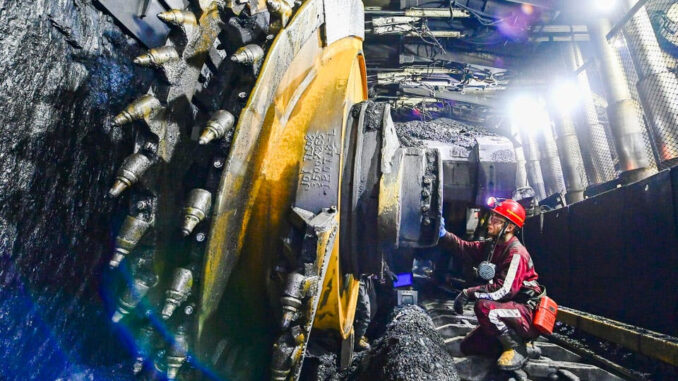
News of record installations of so-called renewable energy electric generation in China may have kindled the hopes of those supporting the “green” agenda and hostile to fossil fuels. However, China is in no position to give up hydrocarbons, particularly coal.
During the first half of 2023, China approved 52 gigawatts (GW) of new coal power, which was more than all the approvals issued in 2021. These new approvals are in addition to the 136 GW of coal capacity that are already under construction. Together, these new plants represent more than 67% of all new approvals in the world.
Why is China doing this despite climate pledges? And what does the future hold?
Nearly all countries signed the historic Paris Agreement in 2015, which set aggressive goals to keep global warming below 2 degrees Celsius over pre-industrial levels. The assumption was that reducing carbon dioxide emissions from burning fossil fuels would halt future warming deemed as catastrophic.
As part of this accord, China, the largest greenhouse gas emitter in the world, agreed to reach carbon neutrality by 2060 and peak its emissions of carbon dioxide by 2030. Many praised these promises, celebrating China’s apparent acceptance of its supposed responsibility to address the climate issue.
But these promises are at odds with reality. China’s economy is mostly based on fossil fuels, which are the most affordable, abundant and dependable energy source. At 159 exajoules, China’s primary energy consumption in 2022 was the highest in the world and 40% more than that consumed the U.S. — the second largest user.
Last year, 82% of the total energy consumed by China came from coal, oil and natural gas. Wind and solar, despite significant investments by Beijing, represented just 7% of all energy consumed in 2022.
Coal remains the linchpin of China’s energy infrastructure and economic vitality. According to the National Bureau of Statistics of China, coal consumption increased by more than 4% in 2022. Coal imports in August 2023 were the highest since 2015. China is ramping up its import from Russia and Australia and continues to increase imports from Indonesia, which is its main supplier.
Tsvetana Paraskova of OilPrice.com writes, “China is mining record amounts of coal and also importing record volumes of coal as it looks to boost its energy security.” This growing appetite for coal is inevitable given the huge demand from the power sector and industry in general.
Demand from Industries to Increase Coal Demand
Over 1 billion tons of crude steel are produced in China each year, accounting for over half of global steel output. The Chinese steel industries—over 90% of them—use coal-based processes.
Despite introducing in 2021 a policy to curb emissions of carbon dioxide, Beijing has yet to announce any cap for steel production. S&P Global believes that there will “be no mandatory steel output cuts this year.” The crude steel output in 2023 is to exceed 2022 levels.
According to the Centre for Research on Energy and Clean Air, “Chinese steel firms are making significant investments in new, coal-based steelmaking capacity.” To put this in context, China’s approval of new steel capacity per year is twice that of the entire capacity of the German steel industry.
Like steelmaking, the manufacturing of cement is energy intensive, with coal accounting for up to 85% of the energy used in the process. China is the world’s largest producer and consumer of cement.
According to analysts, “China consumes as much cement every two years as the U.S. did over the entire 20th century.” Cement production is projected to increase further in coming years, and high demand will possibly last for decades.
In short, China’s security and economic growth depend on satiating the country’s colossal appetite for fossil fuels. Western politics around a non-existent climate crisis won’t change that.



